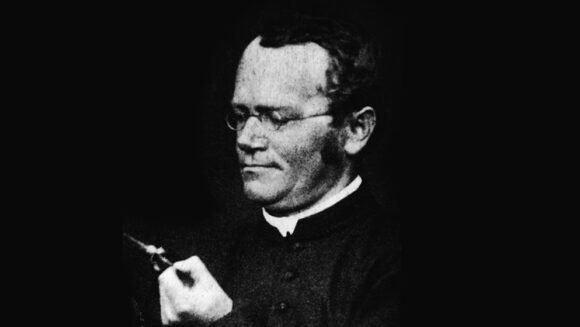Reading Disputed Inheritance by Gregory Radick for New Scientist, 23 August 2023
In 1865 Gregor Mendel, working to understand the mechanisms of hybridisation, discovered exquisitely simple and reliable patterns of inheritance in varieties of garden pea. Rediscovered in 1900, the patterns of inheritance described in his work revealed the existence of hereditary “particles”. Today, we call these particles “genes”.
Well, of course, there’s more to the story than this. In his ambitious and spirited history of the genetic idea, Leeds-based geneticist Gregory Radick accounts for our much more nuanced, sophisticated ideas of what genetics actually is, and in so doing he asks a deceptively simple question: why, knowing what we know now, do we still bother with Mendel? Why, when we explain genetics to people, do we reach for experiments conducted by a man who had no interest in heritability, never mind evolution, and whose conclusions about heritability (in as much as he ever made any) were quite spectacularly contradicted in experiments by Darwin’s favourite plantsman Thomas Laxton in 1866? (“Where Mendel’s pea hybrids always showed just the one parental character in colour and shape, Laxton’s,” says Radick, “were sometimes blended, sometimes wholly like the one parent, sometimes wholly like the other, and sometimes mosaically like both.”)
The evidence against Mendelian genetics began accumulating almost immediately after its 20th-century rediscovery. The “genetics” we talk about today isn’t Mendelian, it’s molecular, and it arose out of other sciences: microbiology, biochemistry, X-ray crystallography, and later a whole host of data-rich sequencing technologies. “Today’s genome,” Radick explains, “the post-genomic genome, looks more like… a device for regulating the production of specific proteins in response to the constantly changing signals [the cell] receives from its environment.”
The point is not that Mendel was “wrong”. (That would be silly, like saying Newton was “wrong” for not coming up with special relativity.) The point is that we have no real need to be thinking in Mendelian terms at all any more. Couching almost the whole of modern genetics as exceptions to Mendelian’s specious “rules” is to be constantly having to explain everything backwards.
Radick explains why this has happened, and what we can do about it. The seed of trouble was first sown in the battle (at first collegiate, then increasingly cantankerous) between the Cambridge-based William Bateson, who made it his mission to reshape biology in the image of Mendel’s experiments, and Oxford-based Walter Frank Raphael Weldon, who saw that Mendel (whose interest was hybrids, not heredity) had removed from his experiments as many ordinary sources of variability as he could. Real pea seeds are not always just yellow or green, or just round or wrinkled, and Weldon argued that actual variability should not be just idealised away.
“It seems to me that every character is at once inherited and acquired,” Weldon wrote, and of course he was right. The difficulty was what to do with that insight. “It is easy to say Mendelism does not happen,” he remarked to his friend Karl Pearson in March 1903, “but what the deuce does happen is harder every day!”
What Weldon needed, and what he pursued, was an alternative theory of heredity, but the book manuscript setting out his alternative vision was left unfinished at his death, from pneumonia, in April 1906.
Radick’s book champions the underdog, Weldon, over the victorious Bateson. Whether his account smacks of special pleading will depend on the reader’s education and interests. (Less than a century ago, geneticists in the Soviet Union faced ruin and even persecution as they defended the Mendelian idea, insufficient as that idea may seem to us now; temperatures in this field run high.)
This is not the first attempt to lay history’s ghosts to rest, and reset our ideas about genetics. That said, I can’t think of one that’s better argued, more fair-minded or more sheerly enjoyable.

